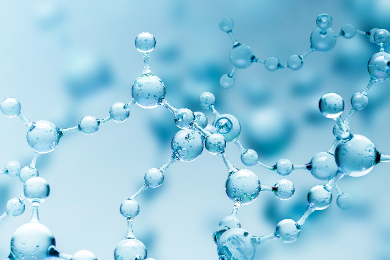Silicone in Thermal Interface Materials
The R&D Department at Nolato Silikonteknik AB
With few exceptions, current Thermal Interface Materials (TIMs) are “PLP type” materials – Particle Laden Polymers: composite materials with functional (in the TIM case, thermally conductive) particles suspended in a polymer matrix.
This polymer matrix may be an elastomer, gel, oil, or wax – as needed to create an insulating film, gap filling pad or filler, paste, or PCM-type material.
And in the vast majority of materials on the market, the polymer matrix in question is silicone based.
However, there’s been growing anxiety regarding silicone in electronics. Consequently, despite their often-disadvantageous aging, thermal stability, and stiffness properties, PLP TIM products with non-silicone-based matrices have been gaining popularity.
This article aims at addressing these concerns.

Basics – what is “silicone”?
Silicone – properly known as polysiloxane – is an inorganic synthetic polymer: a substance built on a chemistry based on molecule chains consisting of repeating units, or monomers. In organic polymers such as typical plastics, these monomers are based around the carbon atom, while in silicone, the backbone of the chain is the siloxane, a sequence of alternating silicon and oxygen atoms.
Depending on the length and geometry – linear or cyclic – of the chain and the degree of crosslinking between chains, a cornucopia of different physical properties, from low-viscosity oil to hard, rubber-like substances, can be created.
Short cyclosiloxane loops (D3-D6) and linear siloxane chains (L2-L6) are volatile, and able to evaporate at room or elevated temperature. Longer siloxanes form stable liquids.
Silicone molecules are inert, with low tendency to react with other chemicals. Hence, specialised grades of silicone are common in everything from cookware to medical implants. Silicone is so prevalent precisely because it boasts such a long list of desirable properties:
- highly variable hardness
- low chemical reactivity and toxicity
- high thermal stability over a wide temperature range
- excellent aging
- good adhesion to surfaces
- does not support microbial growth
- resistance to oxygen, ozone, and UV
- good electrical insulation
In combustion, silicone forms silica – silicon dioxide. At high temperatures, this combustion may form glass. Under specific circumstances, silicone may in high temperatures form formaldehyde, but compared to other polymers, in small amounts.

Silicone migration
In silicone as in many other synthetic materials, molecules that haven’t been crosslinked and thus permanently tied into the polymer matrix can escape the compound.
Volatile molecules – often called Low Molecular Weight siloxanes, or LMW – can escape through evaporation, a process called outgassing. Longer molecules, too large to turn gaseous, can escape as oil leakage, called bleeding.
In TIMs, there’ll always be a portion of non-crosslinked molecules in the matrix, as TIMs need to be soft and pliable – highly crosslinked compounds are hard. Volatile siloxanes can also be added into a matrix as solvent, intended to evaporate after the material has been dispensed in an assembly, allowing one set of mechanical properties pre-application and a radically different one post.
The escaped silicone may migrate by different paths. Liquid silicone can creep along surfaces as an oily film. Commonly employed as a lubricant, silicone oil can creep through narrow gaps.
Outgassed silicone migrates through condensation: molecules evaporating from a compound in one place may recondense onto surfaces elsewhere in the assembly.
Contamination issues
What then are the risks with contamination from migrating silicone in electronics?
Well, there are some very specific ones:
The first and foremost hazard stems from sparking.
This may affect devices where repeated flashes of hot plasma – electrical sparks or arcs – can form with any frequency on surfaces, such as in open relays, connectors, switches, motors – devices that allow (a) sparks to occur regularly, and (b) contaminants to reach active surfaces.
Silicone contaminating a surface where it gets subjected to the heat of an electrical spark may gradually form a glass coating. Over time, this coating may grow in thickness, until the point where the resulting insulation causes the electrical connection to fail.
There was an infamous case in the 70’s, where silicone caulking, used to seal relay-based telecommunications switch cabinets, caused the relays to fail over time.
It bears noting however that modern devices seldom allow open sparks, effectively eliminating the issue.
The second notable potential issue is optical surfaces.
In devices with precision optics, silicone condensing or creeping onto lenses, mirrors, or optical sensors may affect refraction, reflection, or the quality of sampled images.
Hence, in designing optical devices with open optical surfaces, it is advisable to monitor potential silicone contamination issues.
Again however, it’s worth noting that optical assemblies usually are enclosed, blocking contamination. We have experience designing in silicon based TIMs into a variety of advanced optical devices, including ADAS vision systems, high-end professional DSLR cameras, thermal vision systems, CCTV cameras, and more. This particular issue, although a theoretical risk, has yet to manifest a practical problem.

Then there is paint adhesion.
In the sixties, a major car manufacturer experienced problems with blotchy paint finish on their cars. The issue was traced to the paint shop’s ventilation drawing air through ducts that also supplied the workers’ locker rooms. The sixties loved hair spray – products containing volatile silicones. A lot of it found its way into the paint shop and condensed onto the car bodies, causing uneven paint adhesion.
This demonstrates that silicone migration can affect coatings. In most applications, TIM silicone contamination is so minute, electronics so well enclosed, and/or assembled so far away from exterior paint processes, that any contamination from TIMs is unable to affect cosmetic finishes.
However, the real potential issue concerns conformal coating. It is therefore recommended to ensure that boards being coated don’t have silicone in the wrong places.
There are a couple of other potential issues:
One is cosmetics. Silicone oil leaking onto the exterior of a finished product may look unsightly. For some brands, it’s important that also the interior of opened products looks clean and neat. For such applications, possible silicone leakage from TIMs should be considered when designing assemblies and choosing materials.
Another’s re-work: when components are de-soldered and then re-soldered, silicone contamination on solder pads may affect solderability. Silicone oil is difficult to clean off completely. It is therefore recommended, when possible, to test assemblies where repair and re-work are frequent issues to a point where the need for such operations is identified prior to mounting TIMs.
Are there any further issues?
As noted, silicone is chemically very inert. There are no known issues of silicone reacting with or degrading electronic components, devices, conductors, PCBs, gaskets, solder joints, or other elements in electronics.
It’s been suggested that migrated silicone can cause short circuits on PCBs. However, we have not been able to study any such occurrences; nor is such a failure mode possible to explain with physical phenomena, as silicone’s a powerful dielectric – its breakdown resistance is one order of magnitude higher than air.
It can therefore – until we are able to study it or can formulate a physical explanation for the failure mode – only be regarded as a spurious phenomenon.
Silicone tolerance
So, there are some potential issues with silicone migrating from TIMs. It’s also clear that the vast majority of electronic designs won’t be affected by them. In most cases, potential issues are also relatively easy to work around by proper design and/or processes.
But for those designs that may be affected, and where practical workarounds aren’t available – what to do about it, then? How are silicone-related issues best mitigated?
The simplistic approach is of course to ban silicone outright, only using non-silicone based, or “Silicone Free”, products.
However, typical Silicone Free alternatives are still based on a polymer matrix of some other chemistry. While the properties of silicone are well known, the exact properties of these alternative chemistries may not always be.
More important however are the reasons why silicone is used in the first place – no other polymer matrix can boast a similar width of properties. This means that most alternative matrices provide materials that are either much stiffer, have lower thermal stability, or worse aging characteristics than silicone – most likely, all three.
Better then, to go the NASA route and determine limits to how much silicone can be tolerated in an application. While there are some silicone based TIMs that extract relatively high amounts of silicone, there are also many that have basically no extraction at all, with a wide range in between.
The available selection of silicon-based materials is so wide that beyond certain very specific space-based applications, there will as a rule always be a superior silicone-based alternative.

Conclusion
Despite what has been implied in certain contexts, there is no foundation for any claims that silicone would somehow be dangerous to electronics.
Silicone is a highly useful material with a multitude of remarkable properties that make it singularly attractive for use in thermal interface materials. However – like everything else – it does have its own drawbacks and limitations; properties of which any user is advised to be aware of.
Given this awareness those drawbacks are surmountable, often with remarkable ease.







